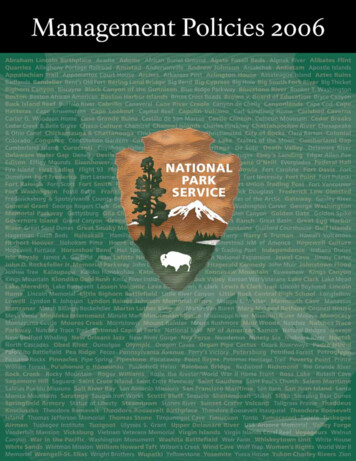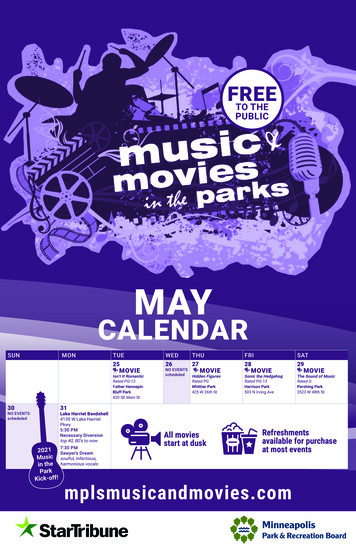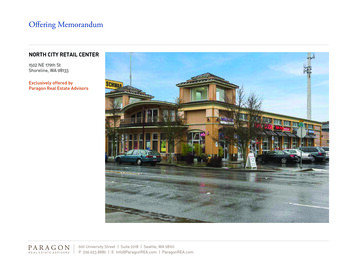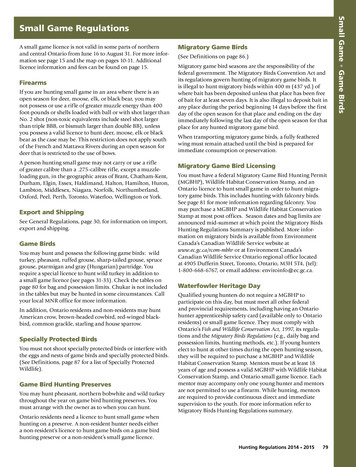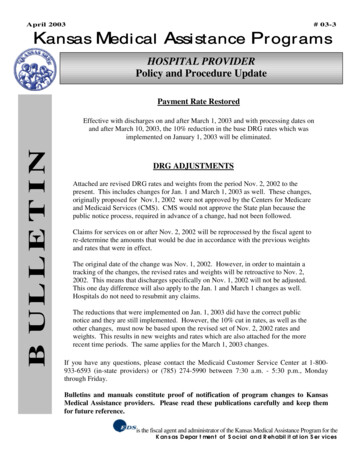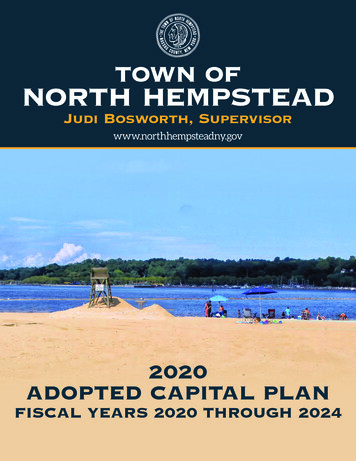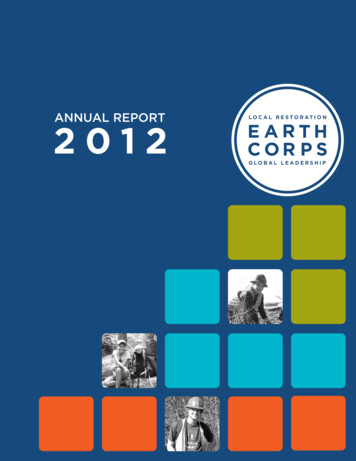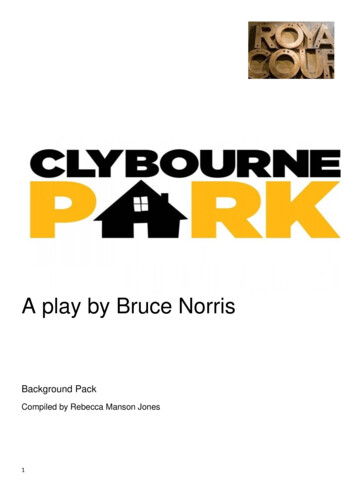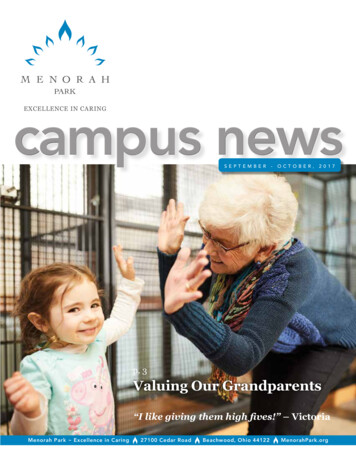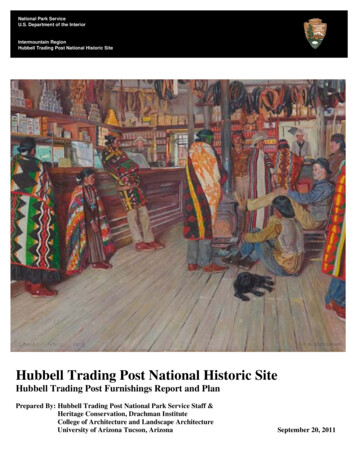
Transcription
National Park ServiceU.S. Department of the InteriorIntermountain RegionHubbell Trading Post National Historic SiteHubbell Trading Post National Historic SiteHubbell Trading Post Furnishings Report and PlanPrepared By: Hubbell Trading Post National Park Service Staff &Heritage Conservation, Drachman InstituteCollege of Architecture and Landscape ArchitectureUniversity of Arizona Tucson, ArizonaSeptember 20, 2011
Conserving an authentic trading post is much more difficult than simply furnishing a historic structure for aparticular point in time. The National Park Service is mandated to protect the physical environment, but alsoto maintain a cultural ambience. This charge includes considering everything from the historic structure, itsfurnishings, the store’s current grocery items, the staff interactions with visitors, and the sounds, aromas,light, and spaces in each room, to the way business is conducted on a daily basis through trade, purchase,sales and the display of merchandise. Most of these separate aspects have and will continue to change. ThisHistoric Furnishings Report provides guidance for the amount of change that is acceptable within themandate.Cover: Oil Painting of Bullpen by Elbridge Ayer Burbank, 1908 (HUTR 3457).1
Hubbell Trading Post National Historic SiteHubbell Trading Post Furnishings Report and PlanBullpen from entrance door. 2005 John Vinck (HUTR 25658new)APPROVED:DateSuperintendentHubbell Trading Post National Historic Site2
Hubbell Trading Post National Historic SiteHubbell Trading Post Furnishings Report and PlanHubbell Trading Post (HB-1)Project Team:Hubbell Trading Post National Historic Site:Lyn CarranzaSuperintendentEd ChamberlinMuseum CuratorNaomi ShibataInterpretationNancy StoneSuperintendent (Retired)Kathleen TabahaMuseum TechnicianThomas VaughnSuperintendent (Retired)Anne WorthingtonSuperintendent (Retired)Western National Parks Association:James E. CookExecutive Director/CEOSteve PickleTrader/Manager, Hubbell Trading PostLeAnn SimpsonExecutive Director/CEO (Retired)National Park ServiceIntermountain Region:Christine LandrumManagement Assistant/ CultureAnthropologist Office of Indian Affairs andAmerican CultureConsultant Team:Heritage ConservationDrachman InstituteCollege of Architecture and Landscape ArchitectureUniversity of Arizona Tucson, ArizonaSusan Bartlett, Project CoordinatorR. Brooks Jeffery, Director3
Hubbell Trading Post National HistoricSiteHubbell Trading Post Furnishings Report and PlanCONTENTSACKNOWLEDGMENTSPageADMINISTRATIVE INFORMATIONIntroductionManagement SummarySite and Building DescriptionManagement ContextBasis for Historic Furnishings Report and PlanHISTORICAL INFORMATIONHistorical Overview of Hubbell Trading PostTrading Posts DefinedEvolution of the Trading Post SystemAnalysis of Historical Occupancy and Economicconsiderations over the Life of the Trading PostCHARACTER-DEFINING FEATURES FOR HUBBELL TRADING POSTIndividual Room DescriptionsCharacter-defining Features and Identified IntrusionsEVIDENCE OF INDIVUDUAL ROOM USE AND ORIGINAL FURNISHINGSGeneral AtmosphereDocumented Furnishings Changes over TimeTrading Post Exterior and StructureBullpenTrader’s OfficeRug RoomWareroomConclusionFURNISHINGS PLANConserving an Authentic Trading PostOperations within the Trading Post SummaryRECOMMENDATIONSIndividual Room Recommendations and Support EvidenceGUIDELINES AND PROCESS FOR FURNISHINGS CHANGESSummary GuidanceNPS/WNPA CollaborationBIBLIOGRAPHY4
APPENDICESAppendix A: Operations within the Trading PostAppendix B: Economic/Historic Events in the Trade EraAppendix C: Traders, Superintendents, and Post Masters ChronologyAppendix D: Furnishings Changes Summary ChartAppendix E: Non-NPS Furnishings and ReproductionsAppendix F: Inventory Comparison 1966, 2009 TableAppendix G: 1985 Memorandum of Agreement NPS/SPMA, 1994 Supplemental MOA NPS/SPMA,2005 Cooperation Association between the NPS and WNPA, 2008 Scope of SalesStatementAppendix H: 2005 Task Force Report for the Operation of the Trading Post at Hubbell Trading PostNational Historic SiteAppendix I: October 2009 Trading Post Survey ResultsAppendix J: Wareroom Extension (HB09) Remodels 1974 - 2010Appendix K: List of Classified Structures DrawingsAppendix L: Historic American Buildings Survey (HABS AZ-59)Appendix M: Hubbell Trading Post Site Plans and ElevationsAppendix N: Historical Notes by David M. Brugge, former Hubbell Trading Post CuratorAppendix O: Sample Decision LogAppendix P: List of Figures with HUTR Catalog NumbersHubbell Trading Post Sign.National Park Service Photograph 2005(HUTR Digital File)5
ACKNOWLEDGEMENTSIn the words of Nancy Stone, former Superintendent of Hubbell Trading Post National Historic Site, “HubbellTrading Post has needed an historic furnishings plan for quite some time.” In spite of a lack of funding tosupport the project, the opportune time presented itself in 2005 thanks to the dedication and collaborativeefforts of many National Park Service and Western National Parks Association staff.Ed Chamberlin,Curator of Hubbell Trading Post National Historic Site and Kathleen Tabaha, Museum Technician eachdeserve particular recognition for their in depth research of Hubbell Trading Post’s extensive archives. Mr.Chamberlin’s attention to detail is clearly reflected in the volume of historical data and thoroughdocumentation included in this plan. The project could not have been completed without the vision andleadership of Superintendents Nancy Stone and Anne Worthington. The fresh perspective brought by thePost’s new trader, Steve Pickle illustrated the importance of the long-standing relationship between theNational Park Service (NPS) and the Western National Parks Association (WNPA) in the continued successof the entire Post operation. LeAnn Simpson, then Executive Director of the WNPA, provided valuableinsight about the relationship between the WNPA and the NPS and a vision for the future. Finally, thesupport provided by the Intermountain Regional Office and the Hubbell Task Force members ensured notonly the successful development of the plan, but also the implementation.Building on previous documents, such as the 1993 Hubbell Trading Post National Historical SiteAdministrative History, more recent reports underpin the historic furnishings plan. These include the 2005Task Force Report; the 2007 Long-Range Interpretive Plan; the 2007 Foundation for Planning andManagement; and, the 2008 Scope of Collection Statement. In addition, the excellent documentation andresearch in the 1972 Preliminary Draft of Furnishings Study for HB-01, by David M. Brugge, wasincorporated extensively into the historical discussions within the report. A more recent Draft InterimFurnishings Report and Plan for Hubbell Trading Post National Historic Site was compiled in 2007 by NancyStone, Kathy Tabaha, Christine Landrum, and Ed Chamberlin. This report formed the outline and much ofthe content for this final report.The Desert Southwest Cooperative Ecosystem Studies Unit is credited with forming a partnership betweenthe University of Arizona Drachman Institute, Preservation Studies Program, and the Hubbell Trading PostNational Historic Site for refining and completing the Hubbell Trading Post (HB-1) Historic FurnishingsReport.We would like to acknowledge and thank the National Trust for Historic Preservation for providing a grantthrough the Cynthia Woods Mitchell Fund for the completion of this report. This generous gift with matchingfunds from the Western National Parks Association made it possible to prepare this long over-due andcomplicated plan.Notes:The contemporary term “Native American” is the preferred reference for the Navajo or Diné people, however,the verbatim language such as “Indian” is used when quoting material in earlier reports or direct quotes fromoral histories.Graphics in Appendix M and on pages x, x, x, x were drawn by Heritage Conservation Program staff,University of Arizona. All other graphics were provided by National Park Service staff.6
ADMINISTRATIVE INFORMATIONIntroductionHubbell Trading post is an operating trading post on the Navajo Reservation first opened in the 1870s.Hubbell Trading Post is also a unit of the National Park Service, designated in 1965. Unlike other nationalhistoric sites, which have been established to preserve, protect and interpret places of national significance,Hubbell Trading Post National Historic Site is also a historic place that provides for the operation of anongoing commercial enterprise representative of businesses from a century ago. This complicates thecompilation of a Historic Furnishing Report that must provide recommendations for historic furnishings forperiod structures. In the case of Hubbell it must provide more, the addition of a discussion of the ongoinguse of that space by a trading post business that must meet modern demands. The following reportdiscusses those dual demands.Hubbell Trading Post National Historic Site was authorized by act of Congress signed into law by PresidentthLyndon B. Johnson on August 28 , 1965 (Public Law 89-148). The authorization allowed for the purchase ofthe “site and remaining structures .including the contents of cultural and historical value, together with suchadditional land and interests in the land .needed to preserve and protect the post, and its environs for thebenefit and enjoyment of the public.”1 After acquisition of the trading post from the Hubbell family in 1967,the National Park Service began administration and management of the historic site.Hubbell Trading Post was designated a National Historic Landmark in 1960 as a nationally significantexample of a trading post. With the passage of the National Historic Preservation Act of 1966 and theestablishment of the National Register of Historic Places, the property was administratively listed on theNational Register October 15, 1966. Subsequently, a National Register of Historic Places nomination formwas completed which documented the contributing historic structures, including the trading post building(HB-1).The Park’s 1980 Development Concept Plan (DCP) states “the significance of the historic resources atHubbell Trading Post National Historic Site lies in the overall impact of the Navajo traders on the history of2the American Southwest and the Navajo people.” The 160-acre complex represents an intact and fullyoperational trading post and its associated farmland that dates from the third quarter of the nineteenthcentury. According to the DCP, it “is considered the best surviving example of an Indian trading post in theUnited States.”What sets this site apart from every other national park unit is the unusual and specific nature of thecongressional intent behind its designation as a national historic site. In the congressional discussion overits designation, maintaining an “operating trading post” not a “dead embalmed historic site” was the key issueand a challenge from the start. It was emphatically stated that NPS was not to replicate an historic tradingpost nor re-enact a trading operation; this Trading Post was to be “operated along the lines close to thosethat were in effect when it was an active post.”3 This history is discussed in detail in the following pages.The enabling legislation gave very little guidance on how to implement this intent, and it was left up tosucceeding generations of NPS management and WNPA Traders to interpret. The earliest WNPA Trader,Bill Young, was at the post for eleven years from 1967 to 1978. Al Grieve spent the next 3 years at Hubbell,and Bill Malone was at the Site for 24 years from 1981 to 2004. All the Traders tended to establish their ownrules about the operation of the Trading Post, used many of their own furnishings, and based many decisionson personal judgment and whimsy which is what distinguishes a Trader from many of today’s modernretailers. These personal sensibilities reflected each of the Traders individuality, but through accretion,cumulative affect and the lack of guidance or policy on furnishings, small additions and changes haveworked their way into the Trading Post with sometimes detrimental effect on the furnishings, ambience andcharacter. Plastic display boxes, wire post card racks, and woven imported baskets are all examples of1 Public Law 89-148, 89th Congress HR 3320, August 28, 19652 NPS, Denver Service Center. Hubbell Trading Post Development Concept Plan. 1980.3 George B. Hartzog, Director, NPS. As discussed in the Hubbell Trading Post National Historic Site: An Administrative History. 1993. p.21.7
inappropriate although small incursions into the historic environment. Although they serve a certain retailfunction in the Trading Post, this function could be accommodated more effectively with period stylefurnishings.In the mid-1970s, the National Park Service was still wrestling with the restoration of the structuresthemselves. Initially, it was determined that a building restoration should reflect the building as it was in the1920s, a mid-point in the trading post enterprise. However, at a “kitchen conference” (so-called because itwas held at the kitchen table in the Hubbell Residence) attended by Hubbell Trading Post staff and Regionalstaff, the philosophical direction changed not only when the cost of such restoration was determined, but,more importantly, when the participants realized that a 1920s-style restoration would physically andsignificantly change the appearance of the building.4 Instead the NPS would stabilize and preserve thebuilding as it was but do little to restore it to any specific period. This was an important decision point for theNational Park Service and formed the basis for maintaining the Trading Post as a “living history” monument.National Park Service staff, including Tom Vaughn, the Superintendent, concluded “that the life of the placewould continue on its own natural course, not be redirected – or misdirected – by the National Park Service.”5Guidelines for Preparing Historic Furnishings Reports prepared by National Park Service’s Harpers FerryCenter6 provided a good starting point for analysis and discussion of key issues that exist now and willundoubtedly emerge in the future with management changes and differing philosophical approaches to thecurating of the museum objects and the Trading Post itself. The recommendations in this report aim atminimizing intrusions that may diminish the character and integrity of the Trading Post store while remainingcognizant of visitor and employee safety and WNPA operational needs. The report maximizes use ofexisting information sources including historic photographs, archival records, and oral history interviews toguide the furnishings and prevent arbitrary or piecemeal additions which can cumulatively adversely affectthe historic context. The plan evaluates objects in the Site collection for their suitability for use in the TradingPost.This furnishings plan will be an extremely useful document for park management of the trading post and inthe partner relationship between the Park and its cooperating association, Western National ParksAssociation (WNPA). It provides guidance for daily decisions and future direction while establishingreasonable expectations from both partners as to what acceptable furnishings are and what will requirefurther discussion. It recommends a process for discussing changes and needs which will satisfy bothpartners. It establishes events or conditions that will initiate communication and consultation between parkmanagement, the WNPA Trader, and the local community and emphasizes the importance of the furnishingsto the preservation of the historic ambience and character of the Trading Post. Finally, this documentprovides a baseline for documentation and of decisions made to help guide future managers.The document is organized with National Park Service administrative requirements and history presentedfirst. Historical information and a discussion of the Southwestern trading post enterprise in general follow.The details and descriptions of the building and each of its individual rooms, as well as the occupants ispresented in the next section. The report concludes with the Furnishing Plan, recommendations forprocesses and guidelines governing change, and a summary of the recommendations. Useful information,such as economic events in the trade era, furnishings inventories, various relevant NPS/WNPA Memorandaof Agreement is included in the Appendices.4 National Park Service. Hubbell Trading Post National Historic Site: An Administrative History. 1993. p.131.5 Ibid.6 National Park Service, Harpers Ferry Center. Guidelines for Preparing Historic Furnishings Reports: an Annotated Sample of Contents. Accessed urnish-plan-hfr-guide.htm8
Management SummaryLocation and PlansFigure 1. Hubbell Trading Post NHS is located in the town of Ganado within, but not under the jurisdiction of, the Navajo IndianReservation in the northeast quadrant of Arizona. Ganado is 40 miles north of I-40 and 50 miles north and west from Gallup, NewMexico. (http://www.nps.gov/hutr.)Figure 2. Hubbell Trading Post NHS looking northwest. TheVisitor Center on the right side of the image with the Trading Postin the center. Hubbell Hill is in the background.(http://www.nps.gov/hut.).Figure 2a. Hubbell Trading Post Landscape (HUTR DigitalFile Brochure Landscape).9
Figure 3. Hubbell Trading Post Sitewith buildingsFigure 4. HB-01 Floor planOverviewThe Hubbell Trading Post National Historical Site is located in Ganado Arizona off State Highway 264 andadjacent to the Pueblo Colorado Wash. It was authorized by act of Congress August 28th, 1965 (Public Law89-148) and established after acquisition by the Federal government in 1967, at which time the National ParkService (NPS) assumed administration and management of the Trading Post. The enabling legislation ofHubbell Trading Post National Historic Site is to preserve and protect the Trading Post and its environs forthe benefit and enjoyment of the public. The Trading Post is to be conserved as a functional, viableestablishment, reflecting on-going traditional trading relationships.7The 160-acre complex represents an intact and fully operational trading post and its associated farmland thatdates from the third quarter of the nineteenth century. The homestead was established before the NavajoIndian Reservation expanded and surrounded it. The Trading Post was established by John LorenzoHubbell, commonly known as J. L. Hubbell, or Don Lorenzo, who oversaw its operation until his death in1930. It is considered the best surviving example of a Navajo trading post in the United States.The Trading Post (HB-1) is divided into a store, jewelry room, rug room, and wareroom. The just over 5,000sq. ft. building is rectangular in shape and built of uncoursed sandstone and mortar walls, plastered over onthe interior. The board and viga (a round beam) ceiling has a flat earthen roof over the boards and is nowcovered in modern tar paper. The walls extend past the roof, forming parapets, through which canales, orscuppers, drain the roof. Wood-framed, double-hung windows are protected on the exterior with wroughtiron bars and provided with transoms on the north-facing openings.Construction of the Trading Post building began in 1883, was altered in 1889 and again in 1931, and was8rehabilitated in 1970 and 1998. The building’s primary function of sales and storage remained unchangedthroughout its history.7 National Park Service. Hubbell Trading Post National Historic Site 2002 – 2005 Strategic Plan, as cited in Hubbell Trading Post Foundation for Planning andManagement. December 2007. p.3.8 List of Classified Structures. http//www.hscl.cr.nps.gov/insidenps/summary.asp10
This Historic Furnishings Report is intended to be an extremely useful and frequently consulted document inthe preservation and conservation of the Trading Post’s historic furnishings, the guidance for the operation ofthe traditional commercial activities, and the partner relationship between the National Historic Site and theWestern National Park Association (WNPA). It provides guidance for daily decisions and future directionwhile establishing reasonable expectations from both partners as to what acceptable furnishings are andwhat will require further discussion. It recommends a process for discussing changes and needs which willsatisfy both partners and the local community. It supports collaboration among Park management, theWNPA Trader, and the community and emphasizes the importance of the furnishings for the preservation ofthe historic ambience and character of the Trading Post. Finally, this document provides a description ofpast conditions and events to provide a baseline for management decisions in future events.Site and Building DescriptionSite DescriptionThe site is located off State Highway 264 and adjacent to the Pueblo Colorado Wash. To the left along theentrance road lie employee housing units and the maintenance and museum storage compound. Theentrance drive continues west, shaded by large trees on either side, and passes the Visitor Center on theright and terminates at the Trading Post’s gravel parking lot. The cluster of buildings surrounding the TradingPost (HB-1) include the Trading Post’s Wareroom extension, a two-story Barn, the Hubbell Residence, theGuest Hogan, and the Manager’s Residence among other small outbuildings. On the farmlands adjacent theTrading Post it is possible to irrigate approximately 110 of the 160 acres through ditches from the PuebloColorado Wash developed by J.L. Hubbell. Currently about ten acres are under irrigation. Until the 1950s,9when the highway was constructed north of the Trading Post, the road into Ganado ran through the site.Building Description (HB-1)The Trading Post building, which includes the, Wareroom (HB-1) and the Wareroom extension (HB-9) is thebuilding first visible from the entrance road into Hubbell Trading Post National Historic Site. The Bullpen(store), Trader’s Office, Rug Room and Wareroom are located in HB-1, while an addition to the Trading Postto the south, which is contiguous but identified as HB-9, now houses Park Administration. From the exterior,HB-1 and HB-9 appear as one structure. The Trading Post structure and the Wareroom extension were builtin four phases according to dendrochronological data and other sources.10 The Trader’s Office and the RugRoom beams were dated from 1883 and the Bullpen and Wareroom beams were dated from 1889. Theremainder of the larger building, the Wareroom extension, was under construction at the time of J.L.Hubbell’s death in 1930 but was not further completed until 1964, when it was roofed and used as aLaundromat. In 1967 the area was used occupied by NPS offices, then internally remodeled to house theMuseum and offices in 1979. When the new Museum building was completed in 2004, the Wareroomextension was remodeled yet again to serve in its current use as NPS Administration offices.11 Theseremodeling changes are illustrated in Appendix This Historic Furnishings Report is for the Trading Post (HB1) and only references the Wareroom extension (HB-9) for context.The just over 5,000 sq. ft. building is rectangular in shape and built of uncoursed sandstone and mortarwalls, plastered over on the interior. The board and viga ceiling has a flat earthen roof over the boards andis now covered in modern tar paper. The walls extend past the roof, forming parapets, through whichcanales drain the roof. Wooden, double hung windows are protected on the exterior with wrought iron barsand provided with transoms on the north-facing openings.12The building underwent considerable renovation in 1970 to rebuild the footings and reinforce and repoint thestone walls, especially on the north and west walls. The interior west wall and shelving were reconstructed.9 Tom Vaughan communication. January 2011.10 National Park Service. Hubbell Trading Post National Historic Site: An Administrative History. 1993 p.66.11 National Park Service. Floor plans. Various dates.12 Historic American Buildings Survey 433/27001. October 1966.11
The building was re-roofed in 1991. In 1997 linoleum was overlaid in the Rug Room and in 1999 new woodplank floors were overlaid in the Bullpen and the Trader’s Office. In 2010 new plank floors were overlaid onthe existing floor in the Wareroom.Management ContextThe Hubbell Trading Post National Historic Site is managed as a unit of the National Park Service. TheTrading Post Store and Visitor Center Bookstore are operated by the Western National Parks Association,under a cooperative agreement with the National Park Service. The purpose of the WNPA is to promotepreservation and stewardship of the national park system through education, interpretation, and research.In 1996-1997, through a series of interpretive opportunities and overlapping requirements for theGovernment Performance and Review Act (GPRA), the Park was charged with drawing up a missionstatement along with purpose and significance statements which helped define the purpose and chart thecourse of the park’s future. Coincidentally, it reiterated the continuing need for a furnishings plan for theTrading Post.The mission of Hubbell Trading Post National Historic Site is to preserve, protect, and interpret an originalIndian trading post operation and its environs for the benefit and enjoyment of the public. The Trading Postis to be conserved as a functional, viable establishment, reflecting on-going traditional trading relationships.13The following purpose and statement of significance were initially developed by NPS employees, formerstaff, regional NPS personnel, community leaders, and friends of the Site. These were subsequently refinedand included in the December 2007 Foundation for Planning and Management.Purpose StatementThe Hubbell Trading Post National Historic Site is managed by the National Park Service to: Preserve and protect the historic and cultural contents, structures, functional arrangement, andnatural and cultural landscapes of Hubbell Trading Post, including the trading post itself, the Hubbellhome, the grounds, and the farm operations, for the public to understand, experience, and enjoy;Conserve and continue Hubbell Trading Post as a live, operating, dynamic, and functioningeconomic and social institution and a way of life, in the tradition of an earlier era of SouthwestAmerican Indian, Spanish, and Euro-American history;Identify and use Hubbell Trading Post as a preeminent site from which to interpret and understandthe history, culture, and ethnography of American Indians, particularly the Navajo (Diné); and,Preserve the intangible elements important to the heritage and relationships found in the AmericanSouthwest, such as the links between cultures and traditions; a place for socializing, learning and14exchanging information; and, an atmosphere of trust and friendship.Statement of Significance/ThemesAccording to the 2007 Foundation for Planning and Management, the primary significant themes of HubbellTrading Post National Historic Site are the Operations, Structures, Cultural Landscape, Museum Collection,and People: Hubbell Trading Post is the oldest and longest continuously operated trading post in the AmericanSouthwest. J.L. Hubbell established this internationally recognized site in the late 1870s as a centerof commerce for the Navajo people;In continued use since the 1870s, the masonry and adobe buildings and the structures at HubbellTrading Post National Historic Site represent styles of workmanship constructed from readily13 National Park Service. Hubbell Trading Post National Historic Site 2002 – 2005 Strategic Plan, as cited in HUTR Foundation for Planning and Management.December 2007. p.3.14 National Park Service. Hubbell Trading Post National Historic Site; Foundation for Planning and Management. December 2007. p. 3.12
available materials that reflect various cultural architectural traditions. The buildings have thehighest integrity, with the most intact and best examples of an evolving American Southwest tradingpost complex;Hubbell Trading Post National Historic Site is an exceptionally intact homestead relating to a late19th-century trading post. The landscape includes natural and cultural features, such as terracedfarmlands, authentic buildings, structures, and objects, and the Pueblo Colorado Wash. Thelandscape provides a connection that evokes a strong sense of place;The Hubbell Trading Post National Historic Site museum collection is the largest and mostcomprehensive record of a trading post business in the American Southwest. Its combination offurnishings, archives, objects, and oral histories represent the most complete record of a familytrading business and its role in a local community. The museum collection is an essential part of andcontributes significantly to the integrity of the Hubbell family trading business record; and,Hubbell Trading Post continues to be community-focused; a place where traders, Native Americans,and patrons (artists, community members, and visitors) can meet to share ideas, socialize, andcontinue traditional trading practices, while also adapting traditional trading core values to anevolving and increasingly technological and interconnected world. This place continues to be a15crossroad of culture and settlement.Interpretive ObjectivesHubbell Trading Post National Historic Site’s Long Range Interpretive Plan of 1997and 200716, developedwith staff feedback and input, presented nine related fundamental statements, which embody a visitor’sexperience of the park resources. The importance and relevance of appropriate historic furnishings wasreflected in those statements which were to form the basis for interpretive objectives.As noted in the 2007 Foundation for Planning and Management document, “Primary themes should be fewenough in
benefit and enjoyment of the public.”1 After acquisition of the trading post from the Hubbell family in 1967, the National Park Service began administration and management of the historic site. Hubbell Trading Post was designated a National Historic Landmark in 19
